The Best Advanced Distribution Management Systems
Review the top advanced distribution management systems (ADMS) to streamline grid performance and reduce outages. This guide highlights the best solutions for fault management, grid visualization, and load prediction.
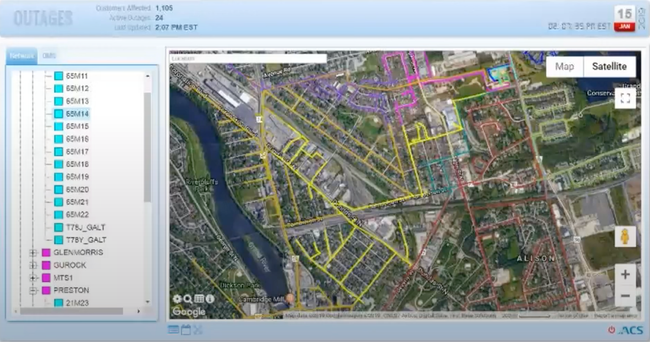
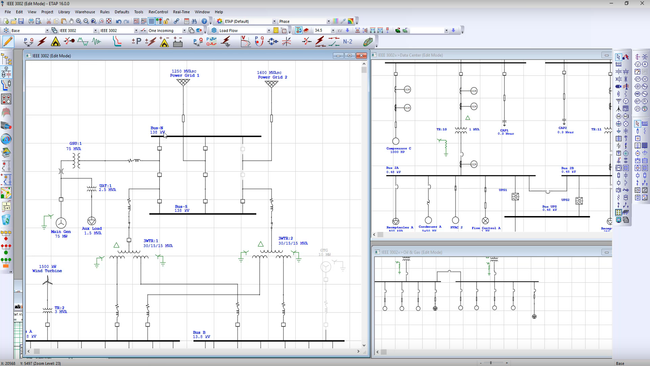
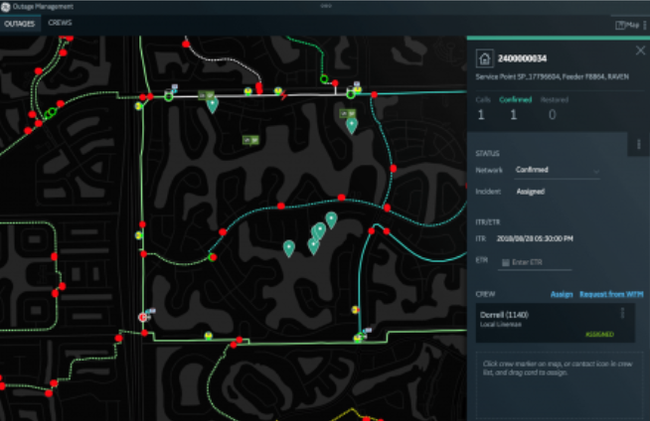
In this guide, we picked the top ADMS platforms based on their ability to enhance grid reliability and fault detection. These solutions were chosen for their strong feature sets, real-world performance, and scalability to meet the growing demands of modern electrical grids.
- PRISM ADMS: Best Overall
- ETAP ADMS: Best for Real-Time Grid Visibility
- GE ADMS: Best for Load Prediction
PRISM ADMS - Best Overall
The Fault Location, Isolation, and Service Restoration (FLISR) module in PRISM ADMS helps minimize downtime and strengthen grid resilience. The system leverages a number of processes and tools to help automate fault detection and reroute power to reduce outage impact:
- Visual Grid Monitoring: Overlays grid topology, telemetry data, and fault sensors onto a live map using Google Maps integration.
- Fault Detection: Identifies the exact location of disruption points using fault sensors and telemetry.
- Automated Isolation: Calculates optimal switch configurations to contain the fault while preserving power to unaffected areas.
- Service Restoration: Reconnects downstream customers automatically by redirecting power flows from nearby circuits.
This hands-off approach reduces manual intervention, improving key metrics like SAIDI and SAIFI. The GridVu mobile app even tracks outages and active work orders in real time for added oversight.
However, the initial setup of PRISM ADMS is likely to take some time, especially with extensive grid data. If you have legacy systems, integration may require additional expertise. Pricing depends on the scale of deployment and number of feeders.
ETAP ADMS - Best for Real-Time Grid Visibility
ETAP ADMS utilizes its Distribution State Estimation (DSE) module with real-time and pseudo-measurements to monitor current, voltage, and load distribution across the network. This helps fill in any gaps where sensors may be sparse and prevents cascading failures by detecting faults early.
DSE extracts data from smart meters, field devices, and SCADA to create an integrated network model. It compares sensor inputs against simulated values to estimate conditions at unmonitored points. The system then forecasts potential faults by evaluating abnormal load patterns and voltage fluctuations. For example, you can use DSE to balance loads more efficiently in areas with heavy solar penetration, avoiding blackouts.
While ETAP ADMS can give you real-time insights even in areas with limited sensor coverage, the accuracy improves with stronger sensor data. Additionally, calibrating across large networks is a complex and labor-intensive process. ETAP offers modular pricing, where you can purchase DSE as a standalone solution or part of the full ADMS suite.
GE ADMS - Best for Load Prediction
AI-based load prediction in GE ADMS can help you anticipate demand surges and manage capacity without overextending your infrastructure. It assesses historical performance, DER input, and weather patterns to provide load predictions up to 96 hours ahead.
Your grid operators can simulate future conditions to test different grid configurations for better resource distribution. During peak events, GE ADMS can even recommend load-shifting strategies to reduce pressure on critical circuits. This is ideal for utilities managing fast-growing or renewable-heavy areas, supporting smarter scaling and investment.
While it’s adept at optimizing load balancing and grid capacity, prepare to invest some time in the initial AI setup. The AI model will also require ongoing training for evolving grids. GE ADMS offers tiered pricing based on your grid complexity and data volume.
What are Advanced Distribution Management Systems?
Advanced distribution management systems (ADMS) are a type of software suite for controlling electrical grids. They are designed to manage energy output, reduce outages, and regulate electrical demand. By establishing these “advanced” systems, utility companies can improve their overall services with next-generation technology.
As an energy management system, ADMS functions help automate power distribution networks for entire communities by establishing a smart grid. By using this software, utility companies can prepare their grids for upgrades to renewable energy, reduce voltage, and build out microgrids for new services like electric vehicle charging.
Note: Those looking for traditional logistics and distribution software should visit our best distribution software guide.
ADMS Features
- Grid analytics: Analyze energy usage along your power distribution network to identify patterns and prepare for the future
- Voltage reduction: Conserve energy by reducing voltage use across your grid by using voltage reduction techniques
- Fault location and detection: Determine where periodic faults are located using input signals
- Outage management system (OMS) and restoration: Track outages from the moment they occur in real-time to better estimate restoration services
- Geographic information system: Review power network data as related to real geographical locations along the grid
- Electrical isolation: Shut off or isolate power in specific parts of the grid to implement repairs or improvements
- Grid modernization: Begin modernizing your power network for more efficient energy usage,
- Renewable energy transitions: Prepare old and outdated grids for conversion to renewable energy sources
- Microgrid support: Expand your grid capacity for new features like electric vehicle charging stations
- Volt/VAR optimization (VVO): Create a more efficient grid by managing voltage levels and reactive power
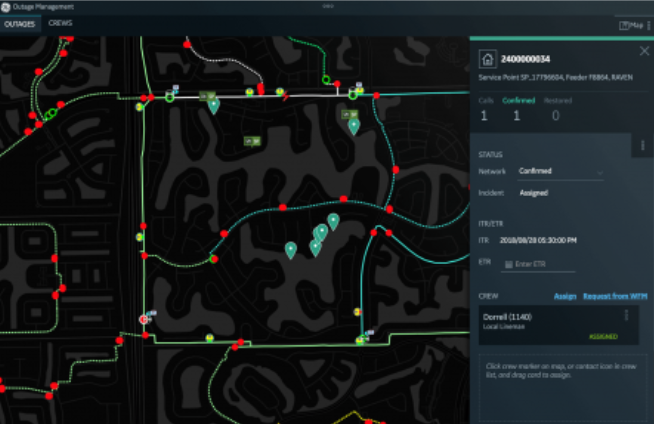
ADMS Benefits
Using an advanced distribution management system will provide your electric utilities business with many benefits, including:
Greater Control of Energy Outages
The first benefit of an ADMS is gaining more control over your grid system. Outages can happen for all sorts of reasons, including:
- Planned maintenance
- Severe weather
- Grid overuse
ADMS allows you to gain real-time data about outages as they occur. Grid analytics tools like outage management systems (OMS) let you review restoration efforts as they happen. You can then keep energy field crews and customers informed of estimated repair times.
For example, say a single electrical substation has experienced an outage due to severe weather. One residential area is without power. ADMS helps you identify which area is affected by the outage so you can inform those customers of repair efforts. Otherwise, you might have to shut down the entire grid to find the issue, depriving all your clients of power.
In addition, ADMS measures power quality and reliability so you can anticipate potential outages before they happen. Review historical data from past outages to see what factors may lead to another. And schedule potential repairs and improvements to the network based on prior performance.
More Energy and Data Security
The entire world depends on electricity to run, making energy sources incredibly valuable. However, the infrastructure of older energy grids is vulnerable to outages caused by increased usage. As such, it’s important for energy companies to ensure their grids are secure. ADMS includes security measures to control the data and analytics from your power network.
One way you can secure your network with ADMS is through Supervisory Control and Data Acquisition (SCADA). This advanced application provides a control system for your network communications.
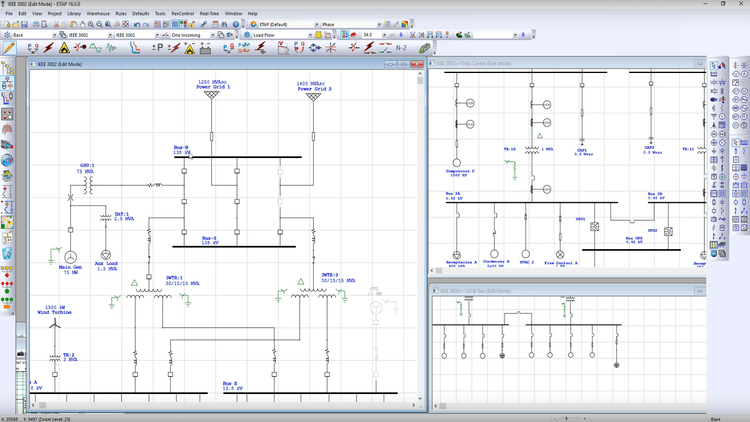
Microgrid Expansion
Electric cars are on the rise worldwide. Power grids must adjust quickly to accommodate charging stations and meet these new demands. ADMS provides the tools you need for grid modernization to adapt to these new features.
Additionally, power distribution networks now include renewable energy from solar, wind, thermal, and water sources. ADMS helps you establish new substations to expand your power grid’s reach.
Higher Customer Satisfaction
A down power grid can leave hundreds or thousands of customers without electricity for hours. The longer they wait for the power to be restored, the less happy they’ll be. ADMS gives you better information about outages so you can keep the public informed about updates to service restoration.
Outage restoration and grid resiliency can reassure customers that your company cares about putting their needs first. Grid improvements are another way to increase customer satisfaction. For example, peak demand management tools help you keep the power on even when customers simultaneously put extra demands on the power grid. When everyone has power, everyone is happy.







